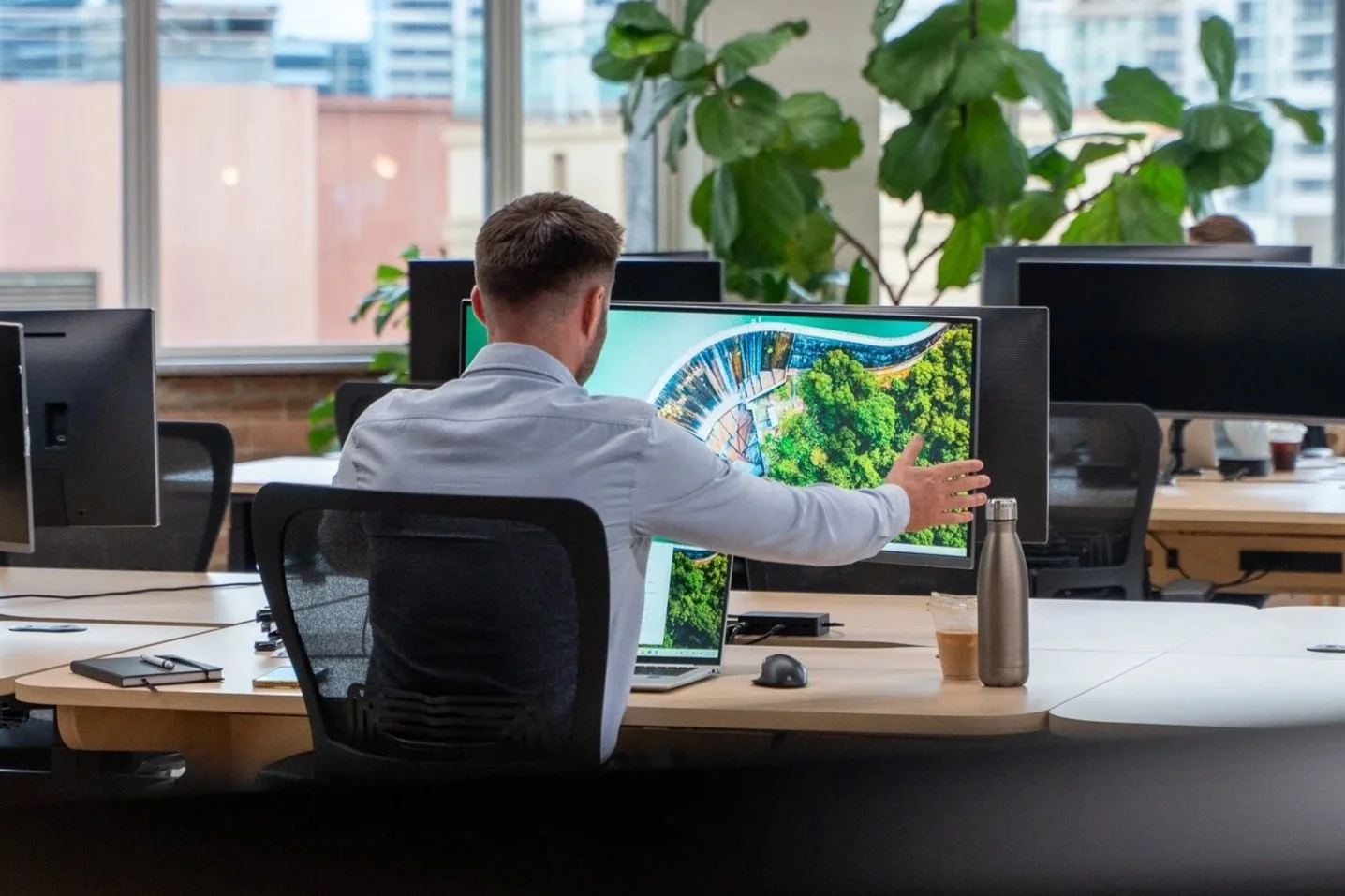Workplace Strategy
Transforming the way people work
Effective workplace strategy aligns with a business’ objectives and vision for its people. Our approach fosters high-performing designs and enhances employee experiences by driving shifts in workplace dynamics.
We engage in comprehensive communication with our clients, exploring facets of people, culture, and performance. By gaining insights into your objectives, we craft strategies aimed at designing innovative workplaces that drive success. We collaborate closely with leadership and employees to gather data, ensuring validation of crucial ideas for project success.
Inside Novo Nordisk
Take a tour of Sheldon’s fitout for Novo Nordisk, and dive into their extensive workplace strategy process.
Why undertake workplace strategy?
Collaborating closely with design and delivery teams, our strategists develop a cohesive plan tailored to achieve project objectives. This encompasses:
Aligning physical workspace design with organisational objectives.
Optimising space utilisation to enhance productivity and efficiency.
Fostering collaboration and communication among team members.
Enhancing employee satisfaction and wellbeing through tailored workplace solutions.
Supporting organisational growth and adaptability by future-proofing workspace designs.
Implementing sustainable practices to minimise environmental impact and promote corporate responsibility.
Incorporating technology integration to streamline processes and facilitate innovation.
Providing data-driven insights to inform decision-making and continuous improvement efforts.
Recent workplace insights
Let’s discuss your next project.
Frequently Asked Workplace Strategy
Questions
-
Design elements like ergonomic furniture, natural lighting, and spaces for collaboration can positively impact productivity and wellbeing. Consult with your team on the types of space they need to complete their best work, and use those requirements to shape meaningful and positive spaces.
-
Workplace design strategy is the deliberate planning and arrangement of a workspace to optimise productivity, employee wellbeing and efficiency. This is achieved through consulting a workplace design strategist in early planning stages.
-
Key factors include the company's goals, employee needs, space utilisation, technology integration, branding and sustainability. We provide workplace strategy workshops to develop detailed workplace strategy for clients.
-
A thoughtfully designed workspace can provide a comfortable, inspiring, and collaborative environment, leading to improved productivity and creativity among employees. Successfully office design not only supports employees’ current needs, but the future needs and environmental sustainability goals of the company.
-
Trends include open floor plans, flexible seating arrangements, designated collaboration zones, and the integration of technology for seamless communication. A great workplace not only connects the people in the office, but also people and clients working remotely.
-
Design elements such as natural lighting, ergonomic furniture, access to greenery, and quiet zones can contribute to employee wellbeing and good mental health. Check out our video of Novo Nordisk’s fitout HERE, a space that thrives due to its diversity of workpoints.
-
Technology is integral to any modern workplace design strategy, supporting flexible work arrangements, remote collaboration, and creating smart, connected office environments. Sheldon’s electrical technology division are experts in providing smart lighting solutions, AV implementations, and room booking systems.
-
Design strategies include hot-desking, adaptable spaces, remote work technology, and creating a strong office culture to encourage in-person collaboration. Workplaces are constantly evolving, and Sheldon’s workplace strategy team can assist with developing a plan that sets your office up for success.
-
Yes, cost-effective strategies include optimising space, using modular furniture, and focusing on a functional layout that aligns with the company's goals.
-
Yes. Sustainable strategies incorporate eco-friendly materials, energy-efficient systems, and waste reduction practices to minimise the environmental impact of the workspace. We have adopted a circular economy approach to office design and construction, making sure that materials are recycled and repurposed, increasing the longevity of the space and reducing environmental impact.
-
Item description






